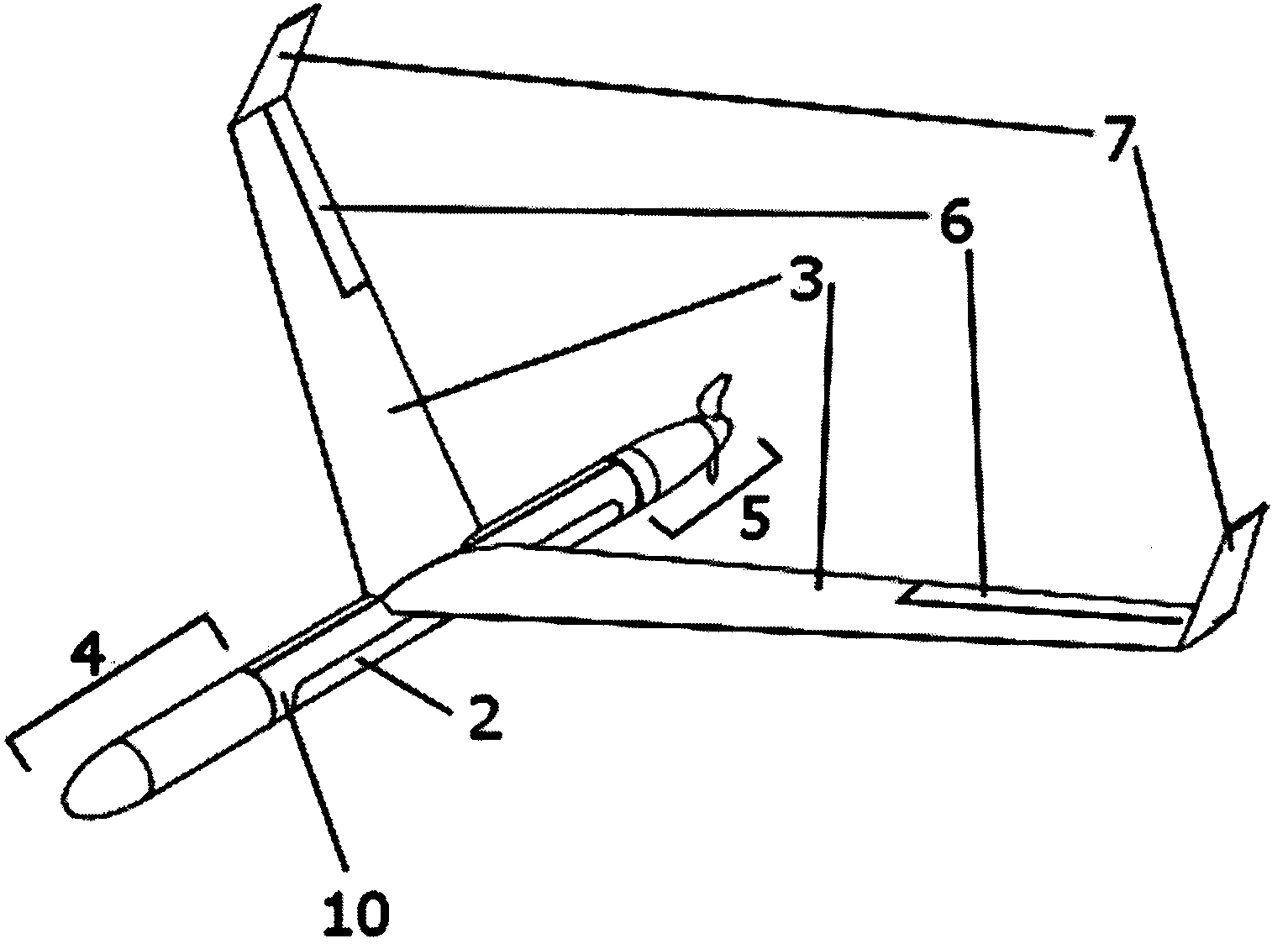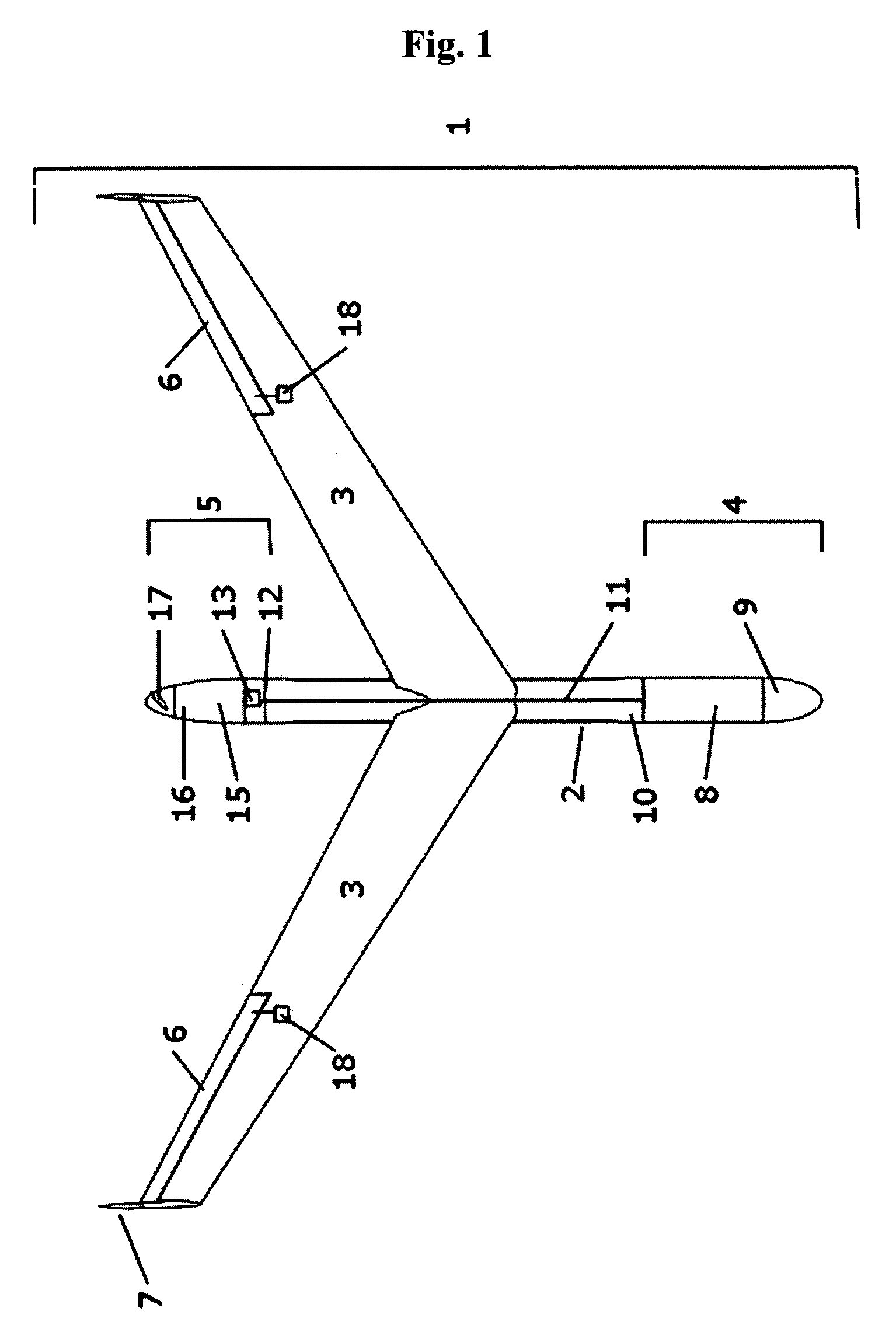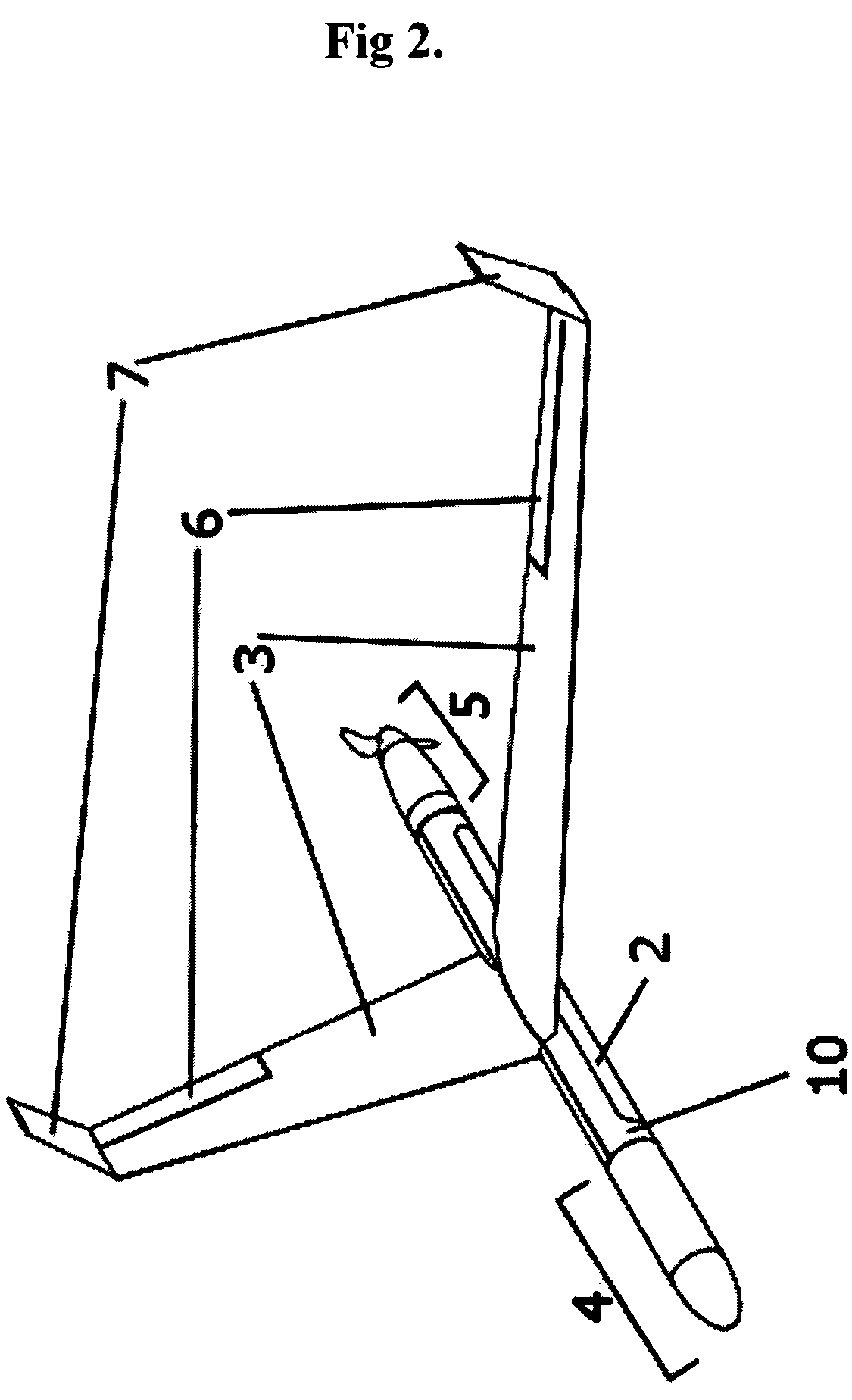[0013] The invention is a device used to retrofit existing, unmodified navy sonobuoys to enable them to self-deploy in an aircraft-like flight from a ship to a remote location. This invention provides a
safer means of sonobuoy or other
payload deployment in situations in which a significant
threat to manned aircraft exists. Even if the threat to aircraft is low, this invention can inexpensively augment the coverage of existing aircraft, or free them to perform other duties. Furthermore, this invention gives sonobuoy deployment capability to ships without onboard aircraft. In addition, since a single ship may launch multiple sonobuoys in sequence and in different directions using this invention, several sonobuoys can enter the water at different locations almost simultaneously, rapidly forming an anti-
submarine protection fence. Furthermore, the use of an autonomous on-board
control system on the invention means that no personnel are required to
pilot the invention to the target location.
[0014] The invention makes use of the sonobuoy itself as the central
structural load-bearing member of a flying
assembly. It consists of aerodynamic surfaces to provide lift and stability in flight, a propulsion
system consisting of an
electric motor driven
propeller and
single use battery, control surfaces and control surface actuators, such as servos, and an on-board
control system that provides navigation and control signals to the invention. The concept is analogous to the way in which ‘smart-bombs’ may use a regular ‘dumb-bombs’ as the core of the
system, but add guidance
package components at the front and / or rear extremities of the weapon. In other words, the components of the flight kit are made to assemble onto an existing sonobuoy, and without the sonobuoy's presence, the invention does not constitute a
flight vehicle. Desired co-ordinates for sonobuoy deployment can be entered into the on-board control system, and using a
satellite navigation method (such as the use of received
GPS signals for navigation), or a magnetic heading-based method, or an inertial-navigation based method, or a combination of these methods, the on-board control system provides the control signals to steer the aircraft to the target. At, or at an acceptable proximity to the sonobuoy deployment co-ordinates, the sonobuoy is separated from the other components of the flying
assembly. Both the sonobuoy and the other components, which do not form a flyable assembly without the presence of the sonobuoy, fall and enter the water separately so as not to interfere with, or become entangled with, the sonobuoy. The invention's flight control system may optionally have a
wireless communications link so that the sonobuoy deployment co-ordinates may be updated while the invention is in flight, or so that the invention may report the exact coordinates of a successful delivery of the sonobuoy. The invention may be stored either fully assembled onto a sonobuoy, or in a disassembled state in order to save room. In addition, the invention may make use of an aerodynamically-driven actuation method in order to assist in separating the sonobuoy from the other components of the flying assembly. Normally, the wings of a rigid-wing aircraft are connected to the
fuselage of an aircraft in such a way that the lift force on the wings is resisted by a connection between the wings and the
fuselage that keeps the wings in approximately the same position and orientation relative to the
fuselage. However, the invention is novel in that, at the time of sonobuoy separation, the wings are permitted to rotate upward (about a hinge-axis) that is a) at or near to the point where the left wing meets the right wing, and b) oriented approximately parallel to the direction of travel, in such a way that the wing tips will come together above the sonobuoy. The invention mechanically couples this aerodynamically-driven motion to assist in separating the sonobuoy from the other flight-kit components.
[0015] The invention differs from the prior methods of sonobuoy delivery in that it recognizes that sonobuoys themselves are built very strongly, and as such have the ability to act as a primary load-carrying structural member of a flying device. In this way, rather than simply carrying the sonobuoy as a passenger (as has been proposed in methods in which the sonobuoy is deployed by recoverable UAVs or drones), the sonobuoy is used as the central
structural load-bearing member of the complete flight kit. The result is that the assembled flight kit plus sonobuoy may be lighter and more compact than a complete sonobuoy-carrying UAV or
drone built of similar materials and
layout that only carries the sonobuoy and does not incorporate it as a part of the structure. This weight savings coupled with the fact that the flight kit does not need to retain enough on-board energy to return to a
recovery point after dropping the sonobuoy potentially gives the invention greater than twice the range of a similarly sized and powered recoverable UAV.
 Login to View More
Login to View More  Login to View More
Login to View More 


